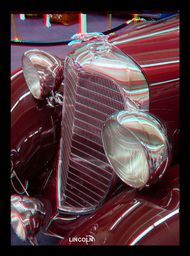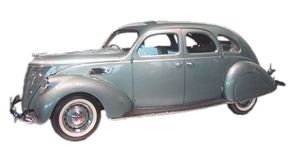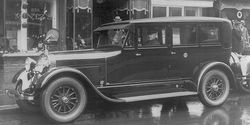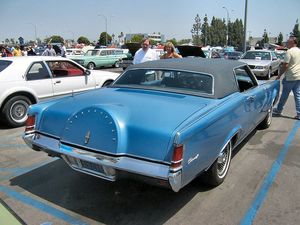.
Lincoln
Search By ModelError creating thumbnail: Unable to save thumbnail to destination
|
| 2012 Current Models |
| Mid-Size Luxury Sedan |
| MKZ |
| Full-Size Luxury & Sports Sedan |
| MKS |
| Full-Size Luxury Sedan |
| Town Car |
| Mid-Size Luxury Crossover |
| MKX |
| Full-Size Luxury Crossover |
| MKT |
| Full-Size Luxury SUV |
| Navigator |
Lincoln is an American luxury automobile brand, operated under the Ford Motor Company. Founded in 1917 by Henry M. Leland and acquired by Ford in 1922, Lincoln has been manufacturing vehicles intended for the upscale markets since the 1920s. Lincoln's prevalent competitor Cadillac, was also founded by Henry M. Leland having acquired the assets of the Henry Ford Company, Ford's second company. While Lincoln was the best selling luxury marque in the United States for an extended period of time, Lincoln lost ground to its competitors, from both imported luxury marques like Lexus and Infiniti, and from the Ford Motor Company's own foreign luxury brands.
To combat this relative slide in sales Lincoln has undergone a complete renewal of its line-up, and even recently unveiled three new models, the redesigned 2010 MKZ sport sedan, the all-new 2009 and upgraded for 2010 MKS luxury sedan, and the all-new MKT full-size touring crossover.
History
The company was founded in 1917 by Henry M. Leland. Leland, one of the founders of Cadillac (originally the Henry Ford Company), left the Cadillac division of General Motors during World War I and formed the Lincoln Motor Company to build Liberty aircraft engines. After the war, the company's factories were retooled to manufacture luxury automobiles.
The company encountered severe financial troubles during the transition, and was consequently bought by Ford Motor Company in 1922, who still owns and manufactures cars under the Lincoln marque in its Lincoln-Mercury Division. The purchase of Lincoln was a personal triumph for Ford who had been forced out of his second company (the first being the Detroit Automobile Company) by a group of investors led by Leland. Ford's company, renamed Cadillac in 1902 and purchased by rival General Motors in 1909, was Lincoln's chief competitor. Lincoln quickly became one of America's top selling luxury brands alongside Cadillac and Packard. In 1927, Lincoln adopted the greyhound as the emblem to be featured as their hood ornament, which was later replaced with the stylized Northern star that is still in use.
In 1931, Lincoln introduced the K-series line of luxury cars, as a successor to the L-series which had represented the bulk of Lincoln's range throughout the 1920's. The same year, Eugene T. "Bob" Gregorie (1908-2002), was hired by Edsel Ford to work in the newly founded Design department of the Ford Motor Company, tasked with putting into sketches the new President and son of Henry Ford's modern ideas on automotive styling, and more particularly with Lincolns.
In 1932, the K-series line was extended, as the base V8-powered cars became the Model KA and a new V12 option was made available as the Model KB. Throughout its product cycle, the line-up kept going upmarket as in 1933 the base V8 was replaced by a smaller V12 engine, while for 1934 both the Model KA and Model KB adopted an evolution of the latter's engine. The two models were then only differentiated by their wheelbase, and for 1935 they naturally merged again to become K-series again and continued practically unchanged until the end of production in 1940.
In 1936, a year after Bob Gregorie was promoted at the head of the Design department, Lincoln extended its offer with the acclaimed introduction of the smaller, entry-luxury Lincoln Zephyr. This would effectively be a turning point in the history of the brand.
Lincoln Zephyr
More than a new type of offer in the Lincoln range, the Zephyr was an all-around new kind of car, as it incorporated aerodynamic cues such as integrated fenders and raked windshield, pioneered by the ill-fated Chrysler Airflow a couple of years before. Penned by Gregorie and external designer John Tjaarda, its design had been hinted at in a concept-car commissioned by Edsel Ford for the Century of Progress Exhibition held in Chicago in 1933-1934. The name of the car itself was tied to this exhibition and the emerging of the modern and "jet" age, as the Zephyr was a streamlined train presented there alongside Ford's "Dream Car" concept. Also, and unsurprisingly, John Tjaarda was particularly interested in the design of airplanes while Bob Gregorie was a boat designer as well. This could only lead to the Zephyr's iconic design, that would be reinforced in 1938 by the iconic "bow-wave" grille, and which was to be recognized later by the Museum of Modern Art itself.
Technically, the lower, smaller and sportier Zephyr featured an all-new 4.4 liter (267ci) V12 producing 110bhp, and was so successful in spite mechanical shortcomings that it almost became a brand name, rather than just a model of the Lincoln brand. Its first year drew much needed traffic to Lincoln dealerships and increased sales dramatically, with about 15 000 sales for the Zephyr alone. That figure represented 80% of Lincoln's numbers.
In addition to the commercial and image success brought by the Zephyr, the introduction of the car also marked a turning point of Lincoln's history because it would directly spawn the Continental line, which remained for decades the marque's most illustrious nameplate. It started as a one-off coach-built car commissioned by Edsel B. Ford, who wanted a European-style automobile unlike the boxier designs his father's company traditionnally produced, to drive around on vacations in Florida. The Zephyr gave Bob Gregorie his chance to once again turn Lincoln around.
Gregorie reportedly sketched the new car in an hour, working from the Zephyr's base: he simply channeled and sectioned a 1938 Coupé 10cm (4"), allowing most of the existing dies and tooling to be retained (a trick that would be repeated to create the 1953 Buick Skylark out of a two-door Roadmaster), adding the hallmark vertically-mounted spare tire at the back. The Lincoln Continental was born; by the time it ended production in 1948, 5322 were built, almost entirely by hand. The Zephyr, on which it was based, stopped production in early 1942 when Ford converted to war work, and was not revived after production of automobiles was resumed.
The Continental Mark II revived the concept. It was produced by the short-lived Continental division from April 1955 to July 1956 before it was returned to the Lincoln marque. The Mark II had a basic list price of $10,000, the same as a Rolls-Royce that year. The Edsel division merged with Lincoln-Mercury in January 1958 to form the Mercury-Edsel-Lincoln division until the Edsel was discontinued in 1960.
Recent History
The Continental became Lincoln's flagship model until 1981 when the Town Car, previously the Continental's top trim level, became its own model and took over that role.
As recently as 1998 Lincoln was the best-selling luxury brand in the United States, helped by the massive success of the Navigator SUV, and a redesign of the Town Car as well as the Continental. The company was also part of the Premier Automotive Group from 1998 to 2002, but was pulled out due to Ford's new marketing strategy to separate its "import" brands from its domestic marques. In recent years, however, the company has fallen behind Japanese, European, and American competitors for a lack of new models. The company is working to remedy this, however, and is sharing parts and platforms with other Ford divisions worldwide in an attempt to bring more new models to market faster. The company promises five new models in the four years 2004-2008, and has already begun with the new 2006 Mark -LT truck, Zephyr (upgraded and renamed Lincoln MKZ for the 2007 model year) and the MKX Crossover SUV.
Lincoln vehicles are currently available in the United States, Canada, Mexico, Puerto Rico, U.S. Virgin Islands, South Korea, and the Middle East.
Presidential Cars
Leland named the brand after his longtime hero Abraham Lincoln, for whom he had voted in the first presidential elections for which he was eligible.
Lincoln had a long history of providing limousines for the U.S. President. The first car specially built for Presidential use was the 1939 Lincoln V12 convertible called the "Sunshine Special" used by Franklin D. Roosevelt. It remained in use until 1950. A 1950 Lincoln Cosmopolitan called the "Bubble Top" was used by Presidents Truman, Eisenhower, Kennedy and once by Johnson. It was retired in 1965. The Kennedy car was a 1961 Lincoln Continental convertible. It was in use from 1961 to 1977, having undergone extensive alterations which made it an armor-plated sedan after Kennedy's assassination. A 1969 Lincoln was used by Nixon and a 1972 Lincoln used by Presidents Ford, Carter, Reagan and Bush. A 1989 Lincoln was the last Presidential Lincoln as of 2004. Cadillac supplied Presidential limousines in 1983, 1993, 2001, and 2004.
Lincoln Automobiles
| Model | Type | Price Range |
|---|---|---|
| Lincoln Town Car | Luxury Flagship | $43,045 - $56,220 |
| Lincoln Navigator | Full-size Luxury SUV | $50,775 - $73,475 |
| Lincoln MKX | Crossover Luxury SUV | $34,795 - $36,445 |
| Lincoln Mark LT | Luxury Pick-up | $39,050 - $42,450 |
| Lincoln MKZ | Mid-size Luxury Sedan | $29,950 - $31,820 |
Current and near future models
Lincoln is currently switching to a new naming system based around the "Mark" name used since the 1950s. Most Lincoln models will be given a three-letter name starting "MK" (originally standing for "Mark," but now simply pronounced em-kay) starting in 2007. The Navigator and Town Car name will remain, but all other models are expected to use this convention by the end of the decade.
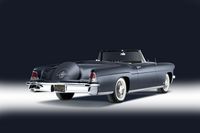
- Lincoln Mark -LT (2005–)
- Lincoln MKS (2008–)
- Lincoln MKX (2007–)
- Lincoln MKZ (2007–)
- Lincoln Navigator (1998–)
- Lincoln Town Car (1981–)
- Lincoln Zephyr/MKZ (2006–)
Recent models
- Lincoln LS (2000–2006)
- Lincoln Aviator (2003–2005)
- Lincoln Blackwood (2002)
- Lincoln Continental (1961–2002)
- Lincoln Mark Series (1956–1998)
- Lincoln Zephyr (2006)
Historical
- Lincoln L-series (1920–1930)
- Lincoln K-series (1931–1939)
- Lincoln-Zephyr (1936–1942), a car line priced between Ford and Lincoln
- Lincoln-Zephyr Continental (1940–1942, 1946–1948), later Lincoln Continental
- Lincoln Custom (1941–1942)
- Lincoln (no other name) (1946–1951)
- Lincoln Sport (1949–1951)
- Lincoln Cosmopolitan (1949–1954)
- Lincoln Lido (1950–1951)
- Lincoln Custom (1955)
- Lincoln Capri (1952–1959)
- Lincoln Premiere (1956–1960)
- Lincoln Versailles (1976–1980)
Recent Lincoln models timeline
| Lincoln Timeline | ||||||||||||||||||||||||||||||||||||||||||||||||||||||||||||||||||||||||||||||||
| Model | 1970s | 1980s | 1990s | 2000s | ||||||||||||||||||||||||||||||||||||||||||||||||||||||||||||||||||||||||||||
| '70 | '71 | '72 | '73 | '74 | '75 | '76 | '77 | '78 | '79 | '80 | '81 | '82 | '83 | '84 | '85 | '86 | '87 | '88 | '89 | '90 | '91 | '92 | '93 | '94 | '95 | '96 | '97 | '98 | '99 | '00 | '01 | '02 | '03 | '04 | '05 | '06 | ||||||||||||||||||||||||||||||||||||||||||||
| Flagship | Continental | Town Car | ||||||||||||||||||||||||||||||||||||||||||||||||||||||||||||||||||||||||||||||
| Mid-level | Versailles | Continental | LS | |||||||||||||||||||||||||||||||||||||||||||||||||||||||||||||||||||||||||||||
| Entry-level | LS | Zephyr | ||||||||||||||||||||||||||||||||||||||||||||||||||||||||||||||||||||||||||||||
| Personal Luxury | Mark series | |||||||||||||||||||||||||||||||||||||||||||||||||||||||||||||||||||||||||||||||
| Mid-Size SUV | Aviator | |||||||||||||||||||||||||||||||||||||||||||||||||||||||||||||||||||||||||||||||
| Large SUV | Navigator | |||||||||||||||||||||||||||||||||||||||||||||||||||||||||||||||||||||||||||||||
| Pick-up truck | Blackwood | Mark LT | ||||||||||||||||||||||||||||||||||||||||||||||||||||||||||||||||||||||||||||||
| Lincoln, a luxury car division of Ford Motor Company | ||||||||||||||||||||||
| <-- earlier | Road car timeline, 1990s-present | Template:Edit | ||||||||||||||||||||
| Type | 1990s | 2000s | 2010s | |||||||||||||||||||
| 0 | 1 | 2 | 3 | 4 | 5 | 6 | 7 | 8 | 9 | 0 | 1 | 2 | 3 | 4 | 5 | 6 | 7 | 8 | 9 | 0 | ||
| Entry-level | LS (V6) | Zephyr | MKZ | |||||||||||||||||||
| Mid-size | LS (V8) | |||||||||||||||||||||
| Continental | Continental | Continental | MKS | |||||||||||||||||||
| Full-size | Town Car | Town Car | ||||||||||||||||||||
| SUV | Aviator | |||||||||||||||||||||
| Navigator | Navigator | Navigator | ||||||||||||||||||||
| Mid-size crossover | MKX | |||||||||||||||||||||
| Full-size crossover | MKT | |||||||||||||||||||||
| Personal | Mark VII | Mark VIII | ||||||||||||||||||||
| Pickup | Blackwood | Mark LT | ||||||||||||||||||||
| Historic models: | ||||||||||||||||||||||
| Capri | Cosmopolitan | Custom | K-series | Lido | L-series | Mark series | Premiere | Sport | Versailles | ||||||||||||||||||||||
| Concept models: | ||||||||||||||||||||||
| Lincoln Futura | Lincoln MKS | Lincoln MK9/Mark X | Lincoln Navicross | Lincoln MKR | ||||||||||||||||||||||
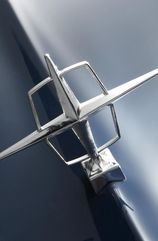
| ||
| LINCOLN | ||
|
Ford | Mercury | Lincoln | Mazda | Edsel | Continental | Merkur Current Models: Town Car · Navigator · MKZ · MKX · MKS · MKT Historic Models: Zephyr · Blackwood · LS · Versailles · Continental · Premiere · Cosmopolitan · Mark series · Mark LT · Lido Concept Cars: MKR · MKS · Futura · Mk9/Mark X · Navicross · L2K · Fifty-X · Continental Concept · Mark 9 · MKT Concept · C Concept · Machete Concept One-Offs: Lincoln-Mercury · Continental · Continental Mark II · SYNC · MyLincoln Touch | ||
| Henry M. Leland | Corporate website | A brand of the Ford PAG |
External links and references
- Lincoln-Mercury Division
- IDSA - Lincoln Zephyr
- Official Website
- Lincoln vs Cadillac A site dedicated to the Lincoln Mark VIII and other Lincoln Automobiles and a good source for repair and modification information
- Lincolns of Distinction- Lincoln Automobile History and information
- http://www.classiclincolns.com/
- UK based Independent Importer, importing new Lincoln Navigator and all other new Lincoln vehicles
- Lincoln Owners- Website with live community, pictures and technical information for owners and enthusiasts of Lincoln luxury automobiles
Ford | Mercury | Lincoln | Mazda | Edsel | Continental | Merkur
